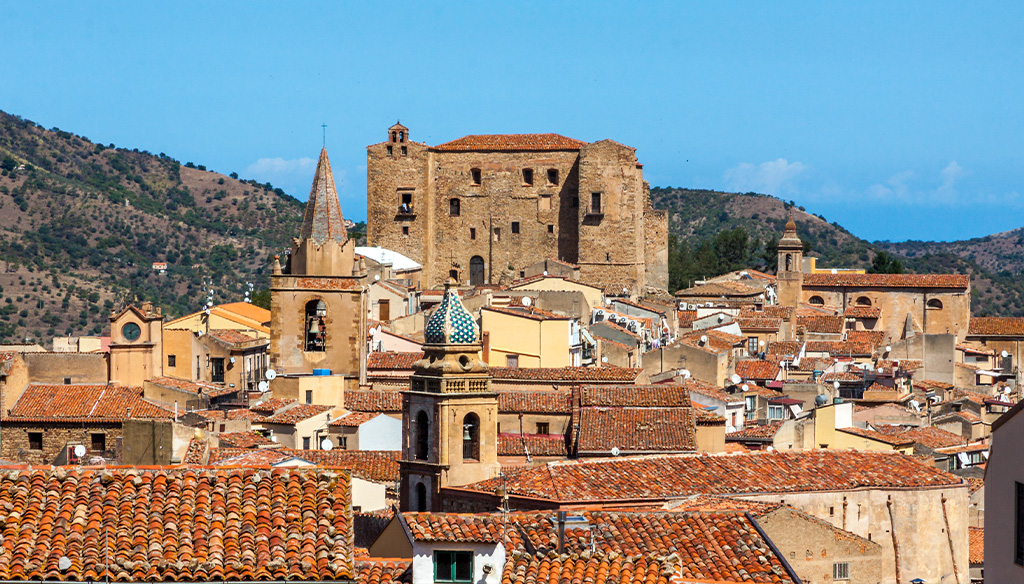Grotta Grattara Park: discovering the Fountain of the Ninfa
- May 21, 2021
- Experiences
A unique excursion to the Grattara Grotto Park at over a thousand meters above sea level. Read More

The town rises at about 423 m above sea level, on the slopes of the Milocca hill:
In addition, it is part of the Madonie Park. The village owes its origins to the Ventimiglia, Lords of the County of Geraci.
In 1316, Francesco I Ventimiglia built a castle next to the Ventimiglia residence, using the structure that already dominated Ypsigro, a small farmhouse that around 1282 had about 300 inhabitants.
Its construction allowed the small community to grow and expand, to the point that in 1454 Giovanni I decided to move there together with his court, allowing Castelbuono to become, thus, the most lively center in the vast heritage of the Ventimiglia. Giovanni, during his transfer, decided to carry the most important symbol of the value of the Ventimiglia family, namely the sacred Relic of the skull of Sant’Anna. It was then donated to Guglielmo by the Duca di Lorena.
Together, the Castle and Sant’Anna, which becomes the patron saint of the country, will be two pivots of many events in Castelbuono. Already during the fifteenth century, the court decided to welcome many artists and writers of different cultures but above all of considerable prestige.
Among the most famous, there is F. Laurana, who worked at the Mausoleum of the Ventimiglia. Moreover, in this period, both inside and outside the walls, convents and parishes were built, all with the intervention of Lombard and Tuscan masters. The latter took care above all of the urban expansion of the town of Castelbuono which, from a feudal type city finally passed around the sixteenth century to take on important characteristics of a capital type city. The cultural life of the town is very lively and fundamental.
Undoubtedly, it was the Serpotta who, working on the chapel of St. Anna, made a very important contribution to the evolution of the urban plan of the city. In addition, the castle was renovated several times over the years, and the Ventimiglia, as proof of their love for culture and the arts, decided to donate a theater to the city.
In those years, many literary academies were active, and among the outstanding figures certainly stands out that of Torquato Tasso, who was also a court artist.
In the last decades of the eighteenth century, however, this climate of evolution and production, slowly began to change and, even, to stop, to reach the scenarios of the nineteenth century. This period was marked by the disappearance of the great nobility. So Castelbuono experienced the presence of other families who, in the years to come, however, kept high prestige.
Finally, in 1818-1820 several seismic tremors severely damaged the castle. In fact, the Matrice Nuova lost its bell towers and the dome, and even the demolition of the last floor of the Castle was established. Around the early years of the twentieth century, the City bought the Castle and, with it, the relic of the skull of Sant’Anna.
